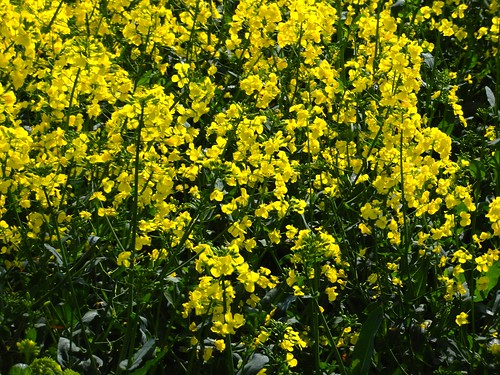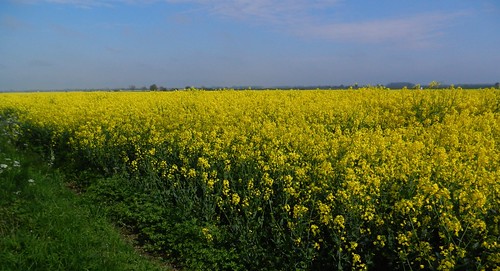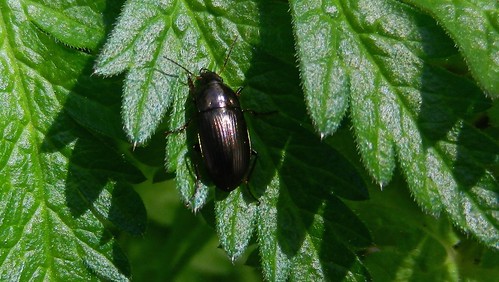Feeding time in the Great Tit nest box:
Food gathering goes on from dawn to dusk with eight hungry beaks to feed.
Saturday, 3 May 2014
Friday, 2 May 2014
Great Tit Nest - Final Count
For a short while this morning I was able to see clearly how many hungry beaks were begging to be fed. Finally I could see that all eight eggs did hatch. How the babies are growing. They are just seven days old but wings and feather marking are showing. If you are very quick and observant all eight can be seen after the title fades out.
The parents are obviously doing a grand job.
The parents are obviously doing a grand job.
Labels:
Babies,
Great Tit,
Nest,
Nestbox,
Nestbox Camera
Thursday, 1 May 2014
Hedgehog and Great Tits
It has been three days since a Hedgehog visited but last night one was foraging for crushed unsalted peanuts in the Hedgehog House. It was followed by a mouse and at first light a Blackbird ventured in for a quick look:
The Great Tit nestbox continues to be a hive of activity with both parent birds fetching food for the babies. If the male arrives with food and the female is already there he hands over the food to her. If he is alone then he feeds them himself:
The Great Tit nestbox continues to be a hive of activity with both parent birds fetching food for the babies. If the male arrives with food and the female is already there he hands over the food to her. If he is alone then he feeds them himself:
Wednesday, 30 April 2014
Lincolnshire - The Yellow County
People born in the county of Lincolnshire were traditionally know as yellow bellies. Usually pronounced yeller bellies. The derivation of this has been lost in the mists of time though there are several theories. See the Wikipedia entry.
Round here the county has assumed a yellow tinge as it is the time when the many fields of oilseed rape are in full flower:



For some this is not a good time as the rape flower can bring on some peoples' hay fever. I don't get affected at this time but later when it has been cut and left to die down and dry. In damp weather the fungi which grows on the cut stems brings me out in sneezing fits.
When I was manoeuvring to get a better view of the field I spotted this little beetle glinting in the sunlight.

A search brought up a page on the Nature Plus section of the Natural History Museum site where someone had asked about the same beetle. It would appear to be a carabid beetle of the genus Amara. Carabids are ground beetles which destroy many insects pests. One of the good guys.
Everything is progressing to plan in the Great Tit nest box with both parents bringing a constant supply of grubs for the ever hungry babies. I'm still not sure how many babies - definitely seven, maybe eight.. Will try to get some more video tomorrow.
Round here the county has assumed a yellow tinge as it is the time when the many fields of oilseed rape are in full flower:



For some this is not a good time as the rape flower can bring on some peoples' hay fever. I don't get affected at this time but later when it has been cut and left to die down and dry. In damp weather the fungi which grows on the cut stems brings me out in sneezing fits.
When I was manoeuvring to get a better view of the field I spotted this little beetle glinting in the sunlight.

A search brought up a page on the Nature Plus section of the Natural History Museum site where someone had asked about the same beetle. It would appear to be a carabid beetle of the genus Amara. Carabids are ground beetles which destroy many insects pests. One of the good guys.
Everything is progressing to plan in the Great Tit nest box with both parents bringing a constant supply of grubs for the ever hungry babies. I'm still not sure how many babies - definitely seven, maybe eight.. Will try to get some more video tomorrow.
Tuesday, 29 April 2014
Simon King Wildlife
Many UK viewers will know of Simon King from his TV appearances but did you know he has several streaming video sites? They are all accessible by clicking on the link below::
http://www.simonkingwildlife.com/
From the home page choose the map which can be zoomed and scrolled to find the cameras as they are in different parts of the country.
With luck you will be able to watch otters, foxes, badgers and a kestrel nest. It all depends on the time of day and when the creatures make an appearance. One way of finding out when something happens is to follow Simon King on Twitter. Though I rarely tweet I do find Twitter very useful for this kind of information.
Simon also has a YouTube channel with over 100 videos to watch. You can access it from his home page.
http://www.simonkingwildlife.com/
From the home page choose the map which can be zoomed and scrolled to find the cameras as they are in different parts of the country.
With luck you will be able to watch otters, foxes, badgers and a kestrel nest. It all depends on the time of day and when the creatures make an appearance. One way of finding out when something happens is to follow Simon King on Twitter. Though I rarely tweet I do find Twitter very useful for this kind of information.
Simon also has a YouTube channel with over 100 videos to watch. You can access it from his home page.
Monday, 28 April 2014
How Many Chicks Now?
With so many tiny birds in the nest it is difficult to count them. I haven't spotted any unhatched eggs so there could be eight chicks though so far I have only managed to count seven.
Both parents are doing a grand job finding the right kind of food for their ever hungry offspring, with mama alternating between brooding and finding food. Notice the way a chick turns bottom up after eating, seen in the third section of the video. This lets the parent collect and dispose of the waste products.
I missed managing to upload anything yesterday as my internet connection suddenly vanished soon after 10 in the morning and I didn't manage to get reconnected until about 9 p.m.. Fortunately I was able to get a slow connection with the iPhone to monitor Zen Internet's fault report page. Apparently it turned out to be a broken fibre cable somewhere in the Manchester area of the country.
Both parents are doing a grand job finding the right kind of food for their ever hungry offspring, with mama alternating between brooding and finding food. Notice the way a chick turns bottom up after eating, seen in the third section of the video. This lets the parent collect and dispose of the waste products.
I missed managing to upload anything yesterday as my internet connection suddenly vanished soon after 10 in the morning and I didn't manage to get reconnected until about 9 p.m.. Fortunately I was able to get a slow connection with the iPhone to monitor Zen Internet's fault report page. Apparently it turned out to be a broken fibre cable somewhere in the Manchester area of the country.
Saturday, 26 April 2014
Four Hatched, Four to Go
Switched on the nest box monitor to find four of the Great Tit eggs had hatched. Both parents now working hard to feed their offspring. PaPa was having a good long look.
Notice how the adults are very careful to use the edge of the nest so as not to stand on their babies.
Notice how the adults are very careful to use the edge of the nest so as not to stand on their babies.
Subscribe to:
Posts (Atom)
